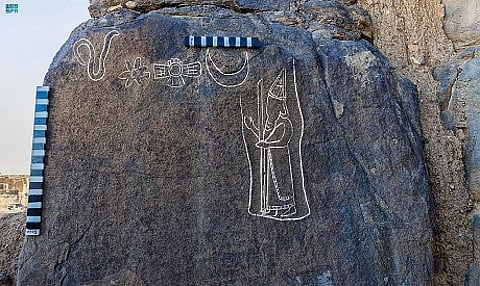

The Heritage Commission today announced a new archeological discovery in Al-Hait Governorate Hail Region, northern part of the Kingdom of Saudi Arabia.
The discovery is a petroglyph that belongs to Babylonian King Nabonidus and dates back to the mid sixth century BC and gives an additional evidence for the historical role of the Arabian Peninsula and its civil communication with most of the civilizations of the ancient Near East.
The archeological discovery consists of a carving on a basalt rock embodying the Babylonian King while holding a scepter with some religious symbols around him.
There is also a cuneiform script with almost 26 lines, making it the longest script to be found so far on the Kingdom of Saudi Arabia.
The Heritage Commission pointed out that the new discovery is subject to study and analysis by specialists at the Commission, adding that announcing more details about the discovery will be made after completing studies and analyses and connecting them with previous results that were recently documented in the northwestern parts of the Kingdom of Saudi Arabia.
This archeological discovery is an addition to previous discoveries of carvings and stone obelisks in several locations in Taima and Hail that mention Babylonian King Nabonidus and prove the wide scope of civil and cultural communication between the Arabian Peninsula and Mesopotamian civilizations.
